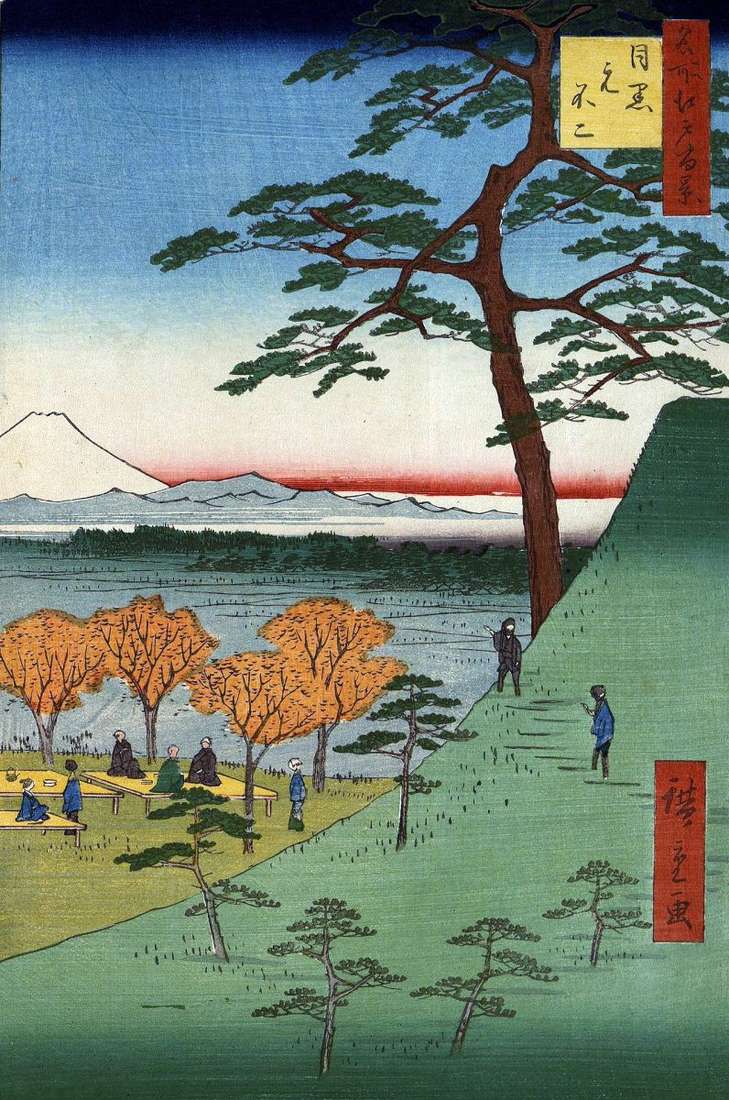
Earlier than Shin-Fuji, Hiroshige showed it in the previous sheet, was built by Moto-Fuji – the original Fuji. The appearance of such structures can also be explained by the difficulties facing the pilgrims, because for this it was necessary to obtain a pass for the passage of the outpost in Hakone, and the ascent took at least 7 days. The height of this mountain was 12 meters. On the slope were planted pine trees, from it opened a beautiful view of the river Megurogava. The slope was not very steep, and the zigzag road led to the top, it was easy to climb and descend. The mountain lasted until 1878.
At the foot of the mountain there were tea pavilions and restaurants, cherry trees grew, which are shown in engraving. It is referred to the section “Spring”, the yellowed foliage on the trees suggests the possible chemical decomposition of the pigment, but not the spring costumes of the pilgrims allow the doubt to creep in. Perhaps, according to the concept of the compiler of the series, it was expedient to place two sheets from Fujimzuka from Meguro next. The late sheet of engraving is redesigned in color. Shaded the outline of the mountain in the foreground, the tree crowns on the second plan are yellowish-brownish, and the soil of the floor is ohrist. Foothills foothills became gray-brown. The color of the square cartouche has changed.
 Meguro, New Fujiyama by Utagawa Hiroshige
Meguro, New Fujiyama by Utagawa Hiroshige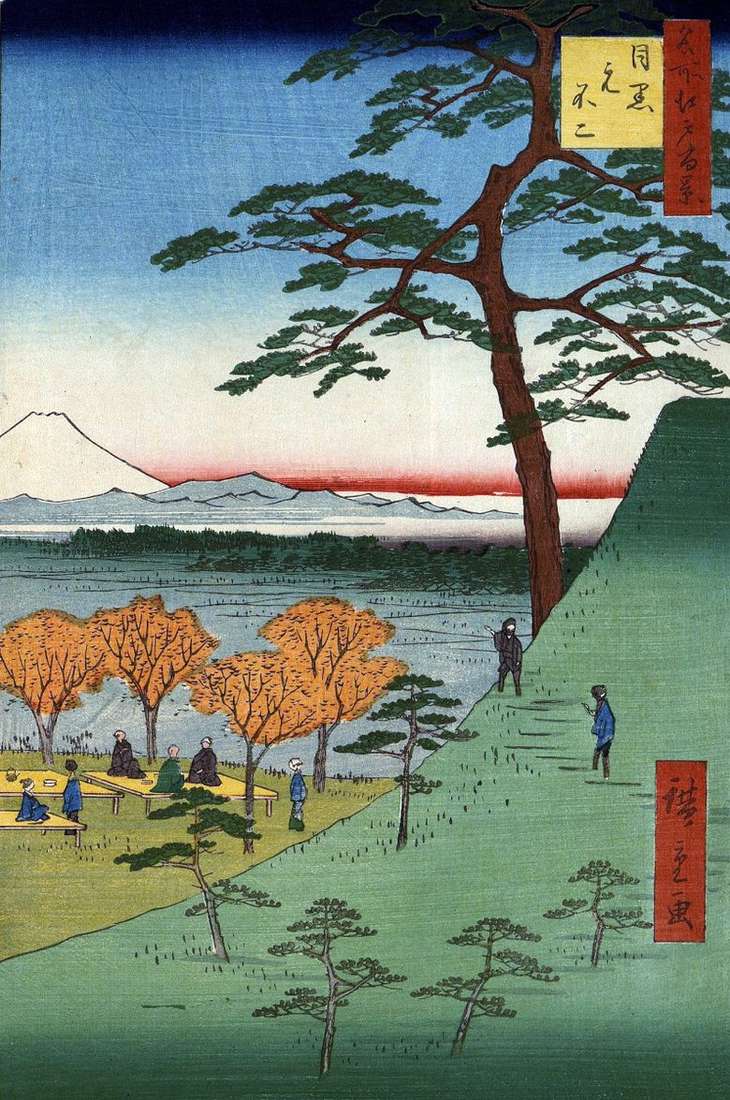 Motofuji en Meguro – Utagawa Hiroshige
Motofuji en Meguro – Utagawa Hiroshige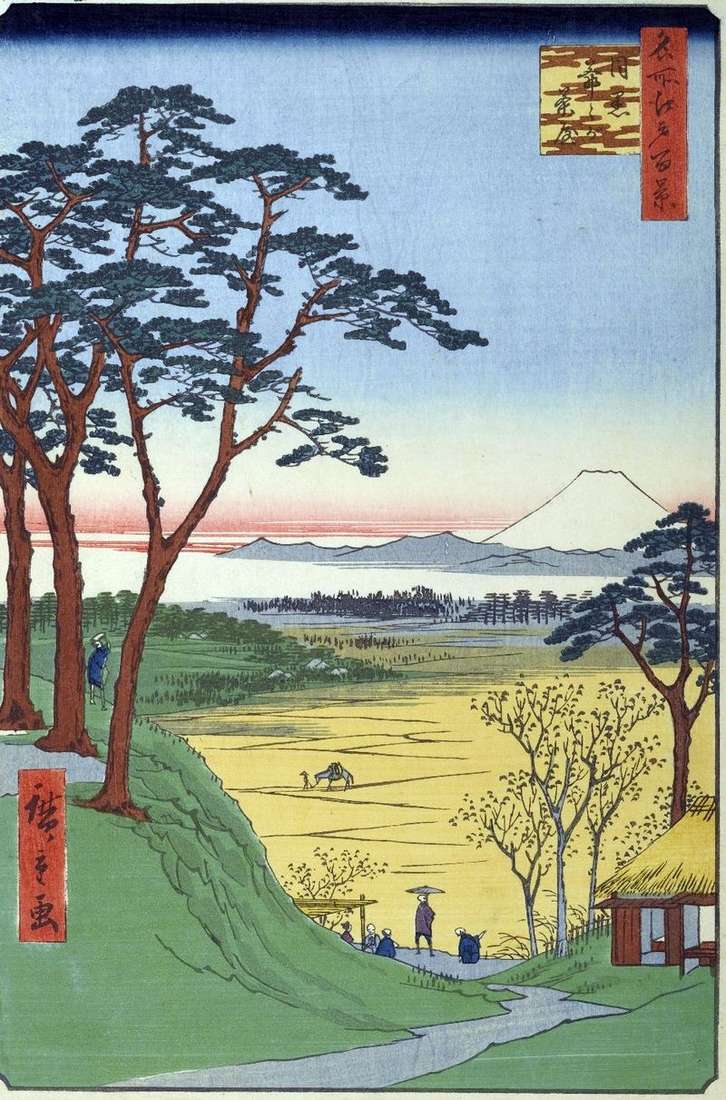 Dzijigataya Tea ( Grandfather’s Shop) in Meguro by Utagawa Hiroshige
Dzijigataya Tea ( Grandfather’s Shop) in Meguro by Utagawa Hiroshige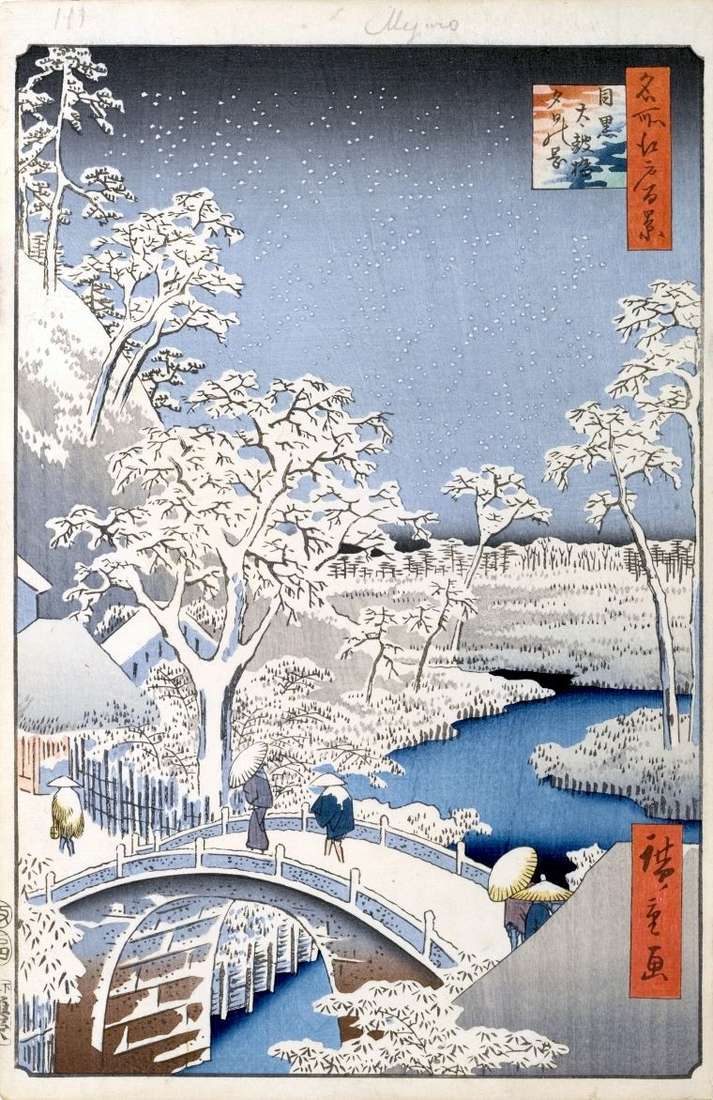 Yuhinooka hill and Taykobashi bridge in Meguro by Utagawa Hiroshige
Yuhinooka hill and Taykobashi bridge in Meguro by Utagawa Hiroshige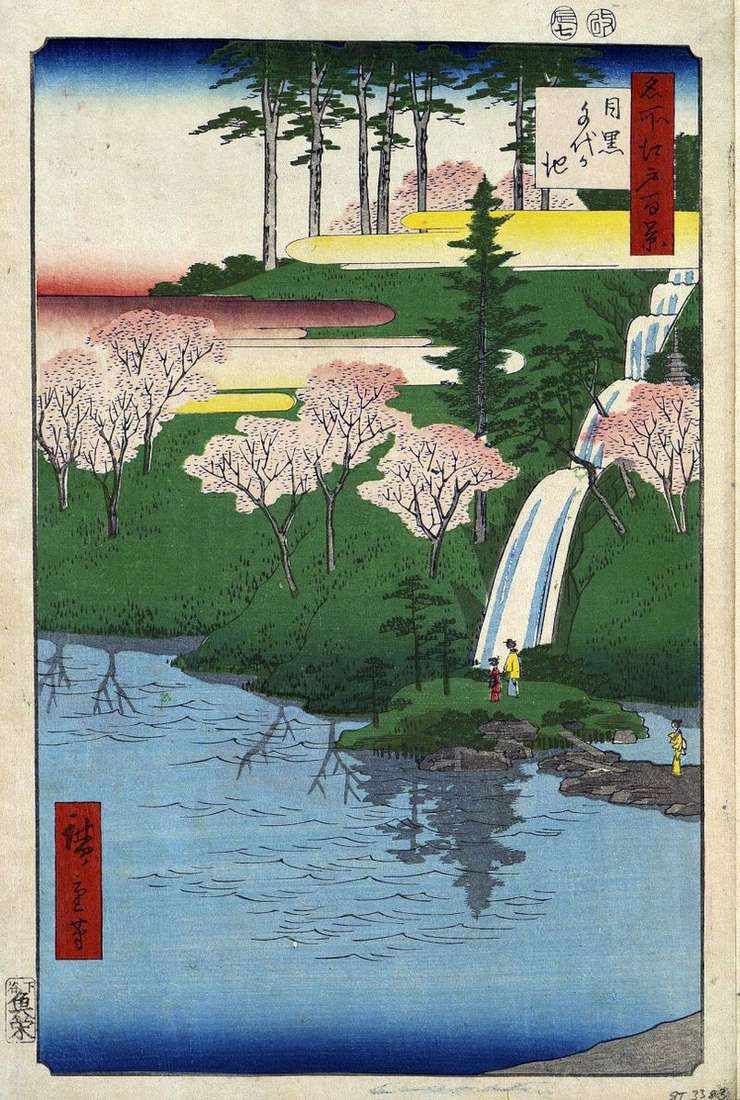 Meguro, pond Tiegaike by Utagawa Hiroshige
Meguro, pond Tiegaike by Utagawa Hiroshige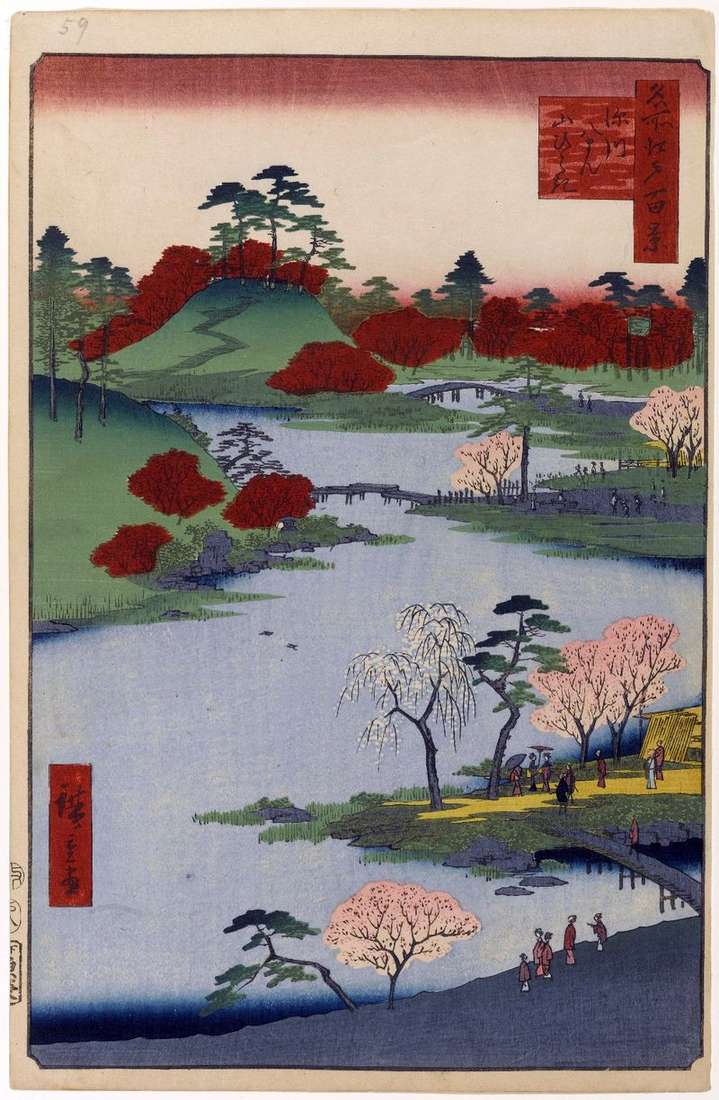 Opening of the mountain in the sanctuary of Hatiman in Fukagawa by Utagawa Hiroshige
Opening of the mountain in the sanctuary of Hatiman in Fukagawa by Utagawa Hiroshige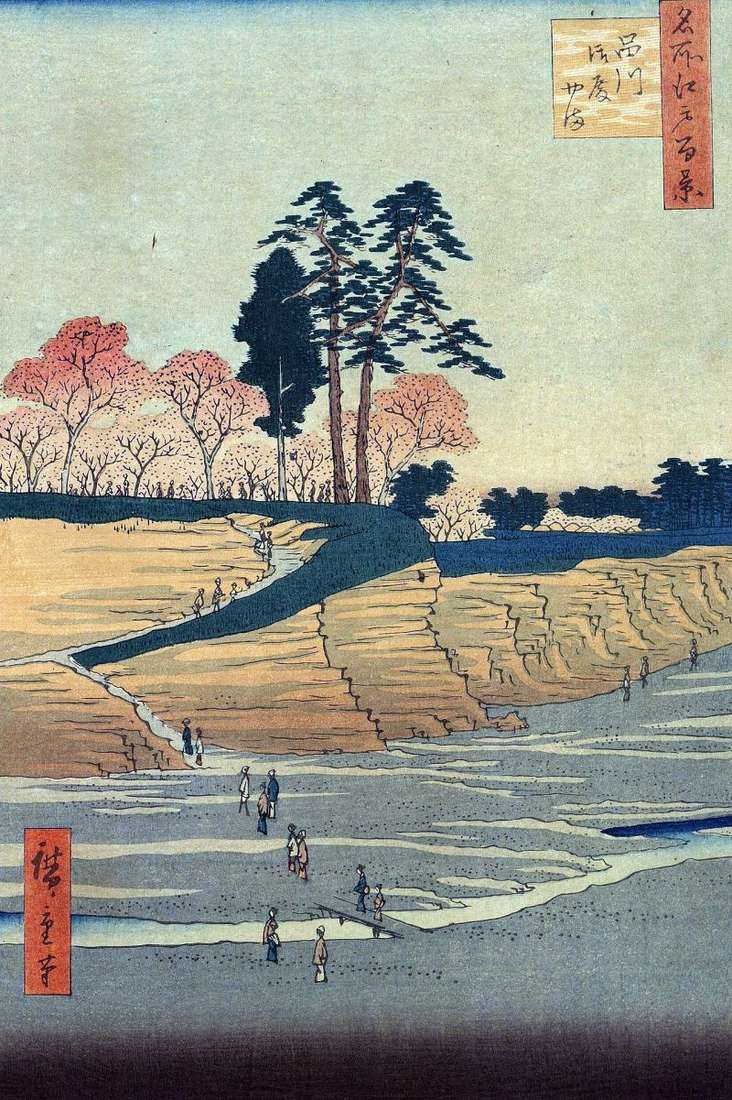 Shinagawa, Mount Gotenyama by Utagawa Hiroshige
Shinagawa, Mount Gotenyama by Utagawa Hiroshige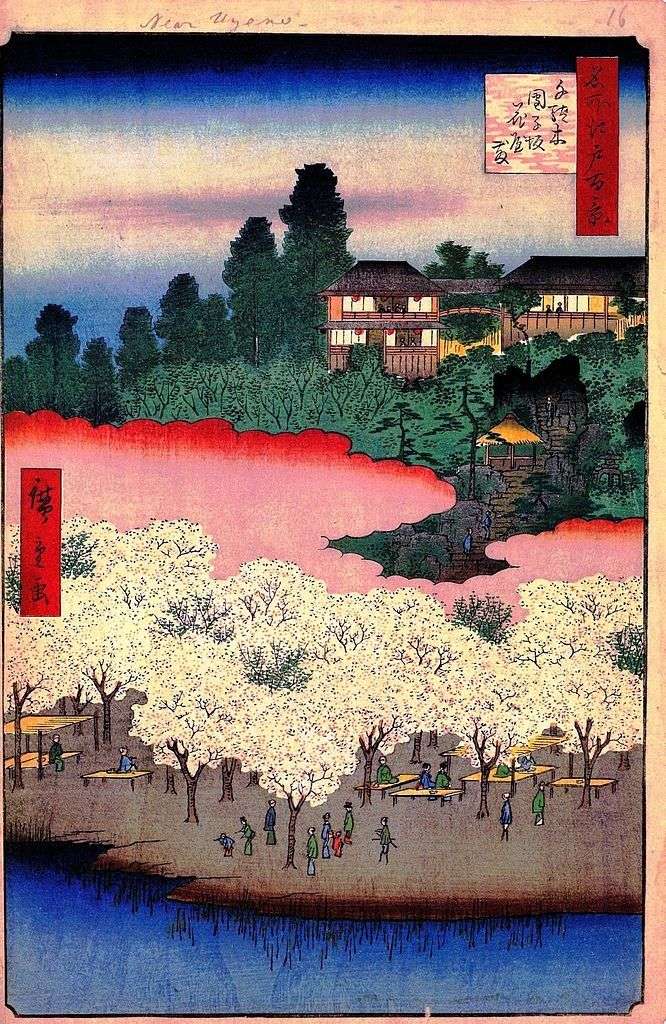 Flower pavilion on the slope of Dangodzak in Sendai by Utagawa Hiroshige
Flower pavilion on the slope of Dangodzak in Sendai by Utagawa Hiroshige